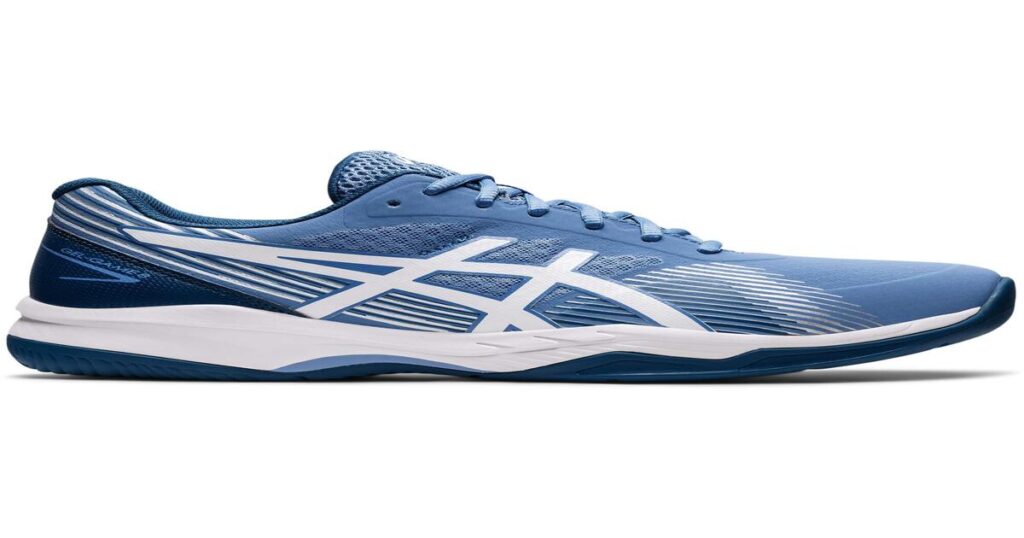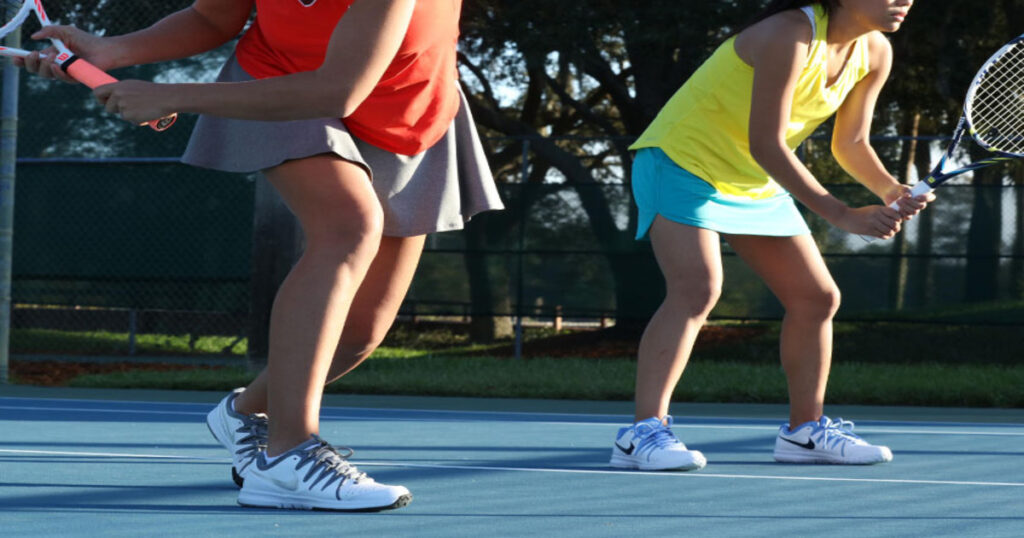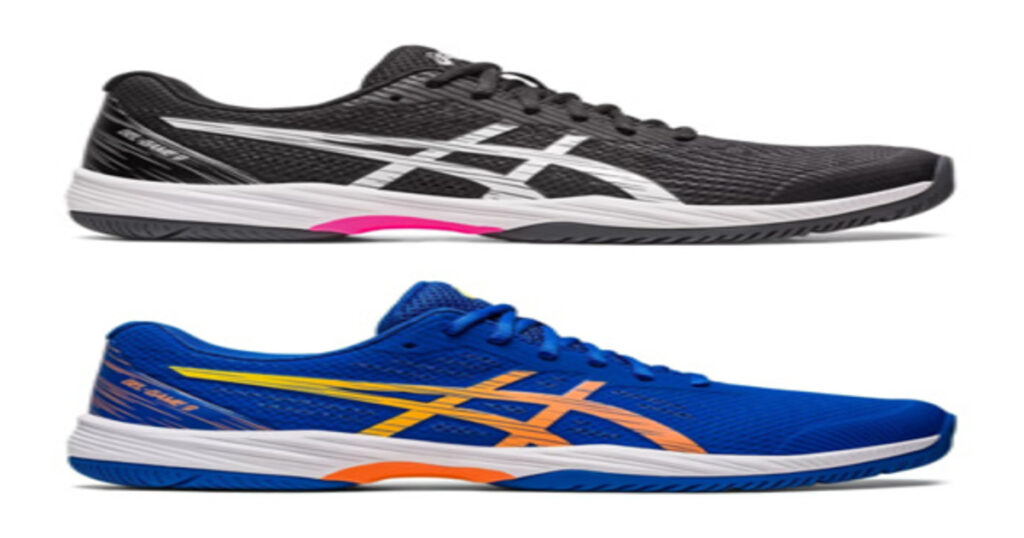Synopsis
“The Complete Guide to Best Pickleball Shoes” is a comprehensive resource that navigates the world of pickleball footwear. The article delves into the significance of specialized shoes for pickleball and offers insights into the different types available, including indoor, outdoor, and gender-specific options. A thorough comparison with shoes from other sports helps readers understand the unique features of pickleball shoes.
Practical advice on selecting the perfect pair, considering court surfaces and key features, is provided. Additionally, the article covers maintenance tips and signs indicating when it’s time to replace pickleball shoes. FAQs address common queries, making this guide invaluable for players seeking optimal performance and comfort on the court.

- Introduction
- Understanding the Importance of Pickleball Shoes
- Types of Pickleball Shoes
- Indoor Pickleball Shoes
- Outdoor Pickleball Shoes
- Men’s and Women’s Pickleball Shoes
- Comparison with Other Sports Shoes
- Tennis Shoes
- Running Shoes
- Badminton Shoes
- Basketball Shoes
- Golf Shoes
- Indoor Soccer Shoes
- Volleyball Shoes
- How to Choose the Perfect Pair
- Key Features to Look For
- Considerations for Different Court Surfaces
- Maintaining and Replacing Pickleball Shoes
- Signs It’s Time for New Shoes
- Tips for Extending Shoe Lifespan
- FAQs About Pickleball Shoes
- Common Questions Answered
- Conclusion
The Complete Guide to Best Pickleball Shoes
Pickleball has quickly emerged as one of the fastest-growing sports in the world, attracting players of all ages and skill levels. Whether you’re a casual enthusiast or a competitive athlete, having the right gear is essential for maximizing your performance and enjoyment on the court.
While many players focus on choosing the perfect paddle, one often overlooked aspect of pickleball equipment is footwear. In this comprehensive guide, we’ll explore everything you need to know about pickleball shoes, from understanding their importance to choosing the perfect pair tailored to your needs.
Understanding the Importance of Pickleball Shoes
Pickleball shoes play a crucial role in ensuring comfort, stability, and injury prevention on the court. Unlike regular athletic shoes, pickleball shoes are specifically designed to withstand the unique demands of the sport, which include sudden stops, lateral movements, and quick pivots.
By providing superior traction, support, and durability, pickleball shoes allow players to move confidently and efficiently, enhancing their overall performance and enjoyment of the game.
Types of Pickleball Shoes
When it comes to pickleball shoes, there are several options to choose from, each catering to different playing conditions and preferences.
Indoor Pickleball Shoes
Indoor pickleball shoes are designed for use on indoor courts, which typically have smooth surfaces made of wood, concrete, or synthetic materials. These shoes feature non-marking rubber outsoles that provide excellent traction without leaving scuff marks on the court.
Additionally, indoor pickleball shoes often have reinforced toe caps and lateral support to withstand the quick lateral movements and sudden stops characteristic of indoor play.
Outdoor Pickleball Shoes
Outdoor pickleball shoes are specifically engineered to withstand the rigors of outdoor play, where surfaces may vary from asphalt and concrete to grass and clay. These shoes typically have more durable outsoles with aggressive tread patterns to provide superior traction on uneven terrain.
Additionally, outdoor pickleball shoes may feature water-resistant uppers to protect against moisture and debris encountered during outdoor play.
Men’s and Women’s Pickleball Shoes
Many brands offer pickleball shoes designed specifically for men and women, taking into account differences in foot shape, arch support, and sizing. Women’s pickleball shoes often feature narrower heels and wider forefeet to accommodate the unique anatomy of women’s feet.
Additionally, women’s pickleball shoes may come in a wider range of colors and styles to cater to diverse preferences than men’s pickleball shoes.

Comparison with Other Sports Shoes
While tennis, running, and other athletic shoes may seem suitable for pickleball, there are significant differences in design and functionality that make pickleball shoes the preferred choice for serious players.
Tennis Shoes
Tennis shoes are designed for the quick lateral movements and frequent stops and starts characteristic of tennis play. While they may offer adequate support and stability for pickleball, they lack the specialized features found in pickleball shoes, such as non-marking soles and reinforced toe caps.
Running Shoes
Running shoes are optimized for forward motion and cushioning to absorb impact while running. While they may provide comfort during pickleball play, running shoes lack the lateral support and stability needed for the quick side-to-side movements and pivots required in pickleball.
Badminton Shoes
Badminton shoes are designed for the rapid directional changes and explosive movements typical of badminton play. While they share some similarities with pickleball shoes, such as lightweight construction and grippy outsoles, badminton shoes may not offer the same level of durability and support for the specific demands of pickleball.
Basketball Shoes
Basketball shoes are engineered to provide ankle support and cushioning to withstand the high-impact movements and jumps associated with basketball. While they may offer adequate support for pickleball, basketball shoes tend to be heavier and less breathable than pickleball-specific footwear.
Golf Shoes
Golf shoes are designed to provide stability and traction on grass and turf surfaces during golf play. While they may offer some traction on outdoor pickleball courts, golf shoes lack the flexibility and lateral support needed for the quick movements and agility required in pickleball.
Indoor Soccer Shoes
Indoor soccer shoes are optimized for traction and ball control on indoor soccer surfaces, such as turf and hardwood floors. While they may offer excellent grip on indoor pickleball courts, indoor soccer shoes lack the durability and lateral support needed for prolonged pickleball play.
Volleyball Shoes
Volleyball shoes are designed for quick lateral movements and jumps on indoor volleyball courts. While they may offer adequate support and traction for pickleball, volleyball shoes lack the specialized features found in pickleball shoes, such as reinforced toe caps and non-marking soles.
How to Choose the Perfect Pair
Choosing the perfect pair of pickleball shoes requires careful consideration of several factors, including fit, support, cushioning, and traction.
Key Features to Look For
When shopping for pickleball shoes, look for the following key features to ensure optimal comfort and performance:
- Reinforced Toe Caps: Pickleball shoes with reinforced toe caps offer added protection against toe drag during quick lateral movements, prolonging the lifespan of the shoes.
- Cushioned Midsoles: Cushioned midsoles provide shock absorption and support, reducing the risk of foot fatigue and discomfort during prolonged play.
- Breathable Uppers: Shoes with breathable uppers help keep your feet cool and dry, reducing the risk of blisters and discomfort caused by sweat buildup.
- Lateral Support: Pickleball shoes with adequate lateral support help stabilize your feet during quick side-to-side movements, reducing the risk of ankle sprains and injuries.

Considerations for Different Court Surfaces
Consider the type of court surface you’ll be playing on when choosing pickleball shoes:
- Indoor Courts: For indoor courts with smooth surfaces, opt for shoes with non-marking rubber outsoles that provide excellent traction without leaving scuff marks on the court.
- Outdoor Courts: For outdoor courts with rougher surfaces, choose shoes with durable outsoles and aggressive tread patterns to provide superior traction on uneven terrain.
Finding the Right Fit
Proper fit is essential for comfort and performance:
- Toe Room: Ensure there is ample room in the toe box to prevent discomfort and allow for natural toe movement during play.
- Heel Support: Look for shoes with snug heel support to prevent slippage and minimize the risk of blisters and irritation.
- Lacing System: Choose shoes with a secure lacing system that allows you to customize the fit and prevent the shoes from loosening during play.
Maintaining and Replacing Pickleball Shoes
Proper maintenance and timely replacement of pickleball shoes are essential for ensuring optimal performance and longevity.
Signs It’s Time for New Shoes
Recognize the following signs indicating it’s time to replace your pickleball shoes:
- Worn-out Treads: If the treads on the outsoles are worn down or flattened, it’s time for a new pair of shoes to maintain optimal traction on the court.
- Decreased Cushioning: If you notice a decrease in cushioning and support, such as flattened midsoles or worn-out insoles, it’s time to invest in a new pair of shoes to prevent foot fatigue and discomfort.
Tips for Extending Shoe Lifespan
Follow these tips to prolong the lifespan of your pickleball shoes:
- Clean and Air-dry: After each use, gently clean your shoes with a damp cloth to remove dirt and debris, then air-dry them away from direct heat and sunlight to prevent damage.
- Rotate Shoes: Rotate between multiple pairs of shoes to allow them to air out and prevent premature wear and tear.
- Store Properly: Store your pickleball shoes in a cool, dry place away from direct sunlight and moisture to prevent deterioration.
FAQs About Pickleball Shoes
We address common questions and concerns about pickleball footwear to help players make informed decisions and optimize their on-court experience.
Compatibility with Other Sports Shoes
Many players wonder whether tennis, running, or basketball shoes can be used for pickleball:
- Tennis Shoes: While tennis shoes offer some similarities to pickleball shoes, such as lateral support and stability, they may lack the specialized features needed for optimal performance on the pickleball court.
- Running Shoes: While running shoes provide cushioning and shock absorption, they may not offer the lateral support and stability required for the quick movements and pivots in pickleball.
- Basketball Shoes: While basketball shoes offer ankle support and traction, they may be heavier and less breathable than pickleball-specific footwear, potentially affecting agility and comfort on the court.

Recommendations for Players with Specific Foot Conditions
Players with specific foot conditions may have unique footwear needs:
- Plantar Fasciitis: Players with plantar fasciitis may benefit from pickleball shoes with extra arch support and cushioning to alleviate pain and provide stability during play.
- Flat Feet: Players with flat feet may benefit from pickleball shoes with motion control features and reinforced arch support to prevent overpronation and reduce the risk of injury.
Conclusion
Investing in the right pair of pickleball shoes is essential for unlocking your full potential on the court. By understanding the importance of pickleball shoes, exploring different types and key features, and following practical tips for choosing and maintaining your footwear, you can enhance your performance, prevent injuries, and enjoy the game to the fullest.
So lace up your shoes, step onto the court with confidence, and let your footwear take your pickleball game to new heights!
More Interesting Articles
- Smartbloks The Ultimate AI-Powered Website Builder – Turbocharge Your Online Presence Effortlessly With 100% Hosting
- First-of-its-kind Smartphone with a Foldable Display
- Unlock Your Love Potential with Score: The Ultimate Dating App for Financially Savvy Singles With Credit Score of 700
- Debunking the Chicken Washing Myth: 60% of Home Cooks Unknowingly Risk Contamination by Washing Chicken
- The Best Sci-Fi Movies to Binge on Netflix This February – 20 Mind-Blowing Sci-Fi Adventures to Ignite Your Imagination and Transport You to Other Worlds!

